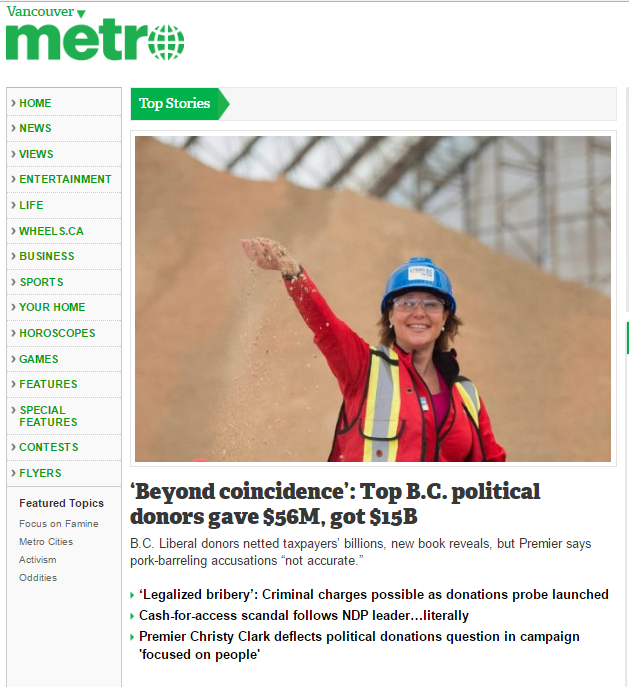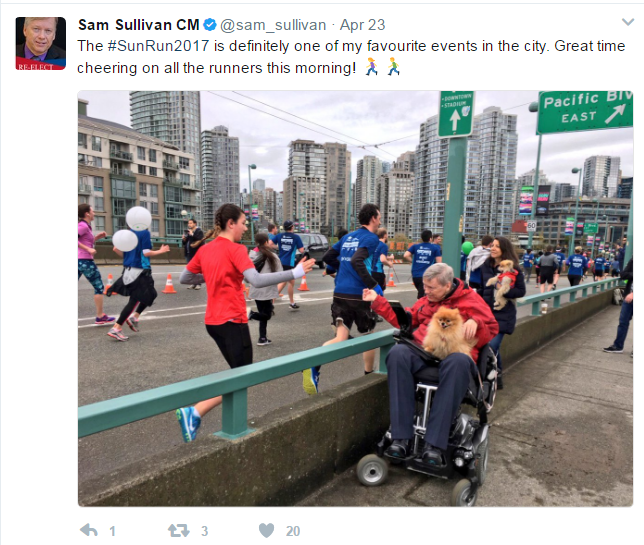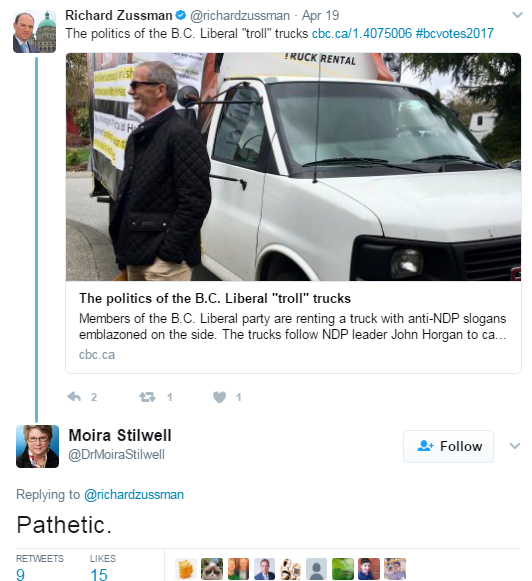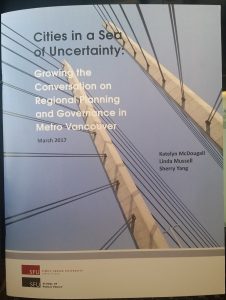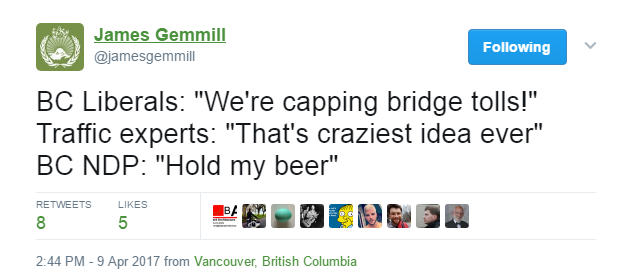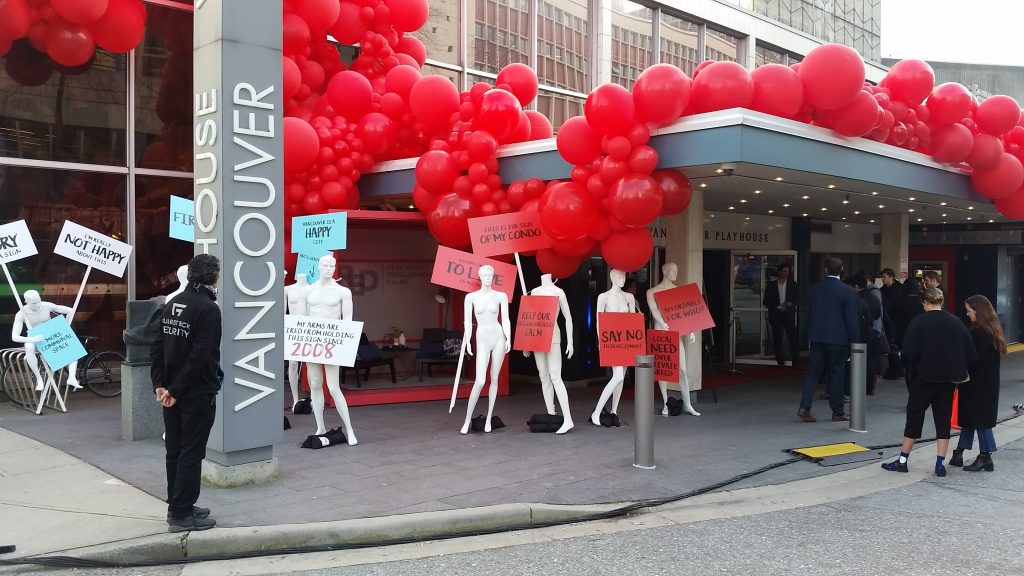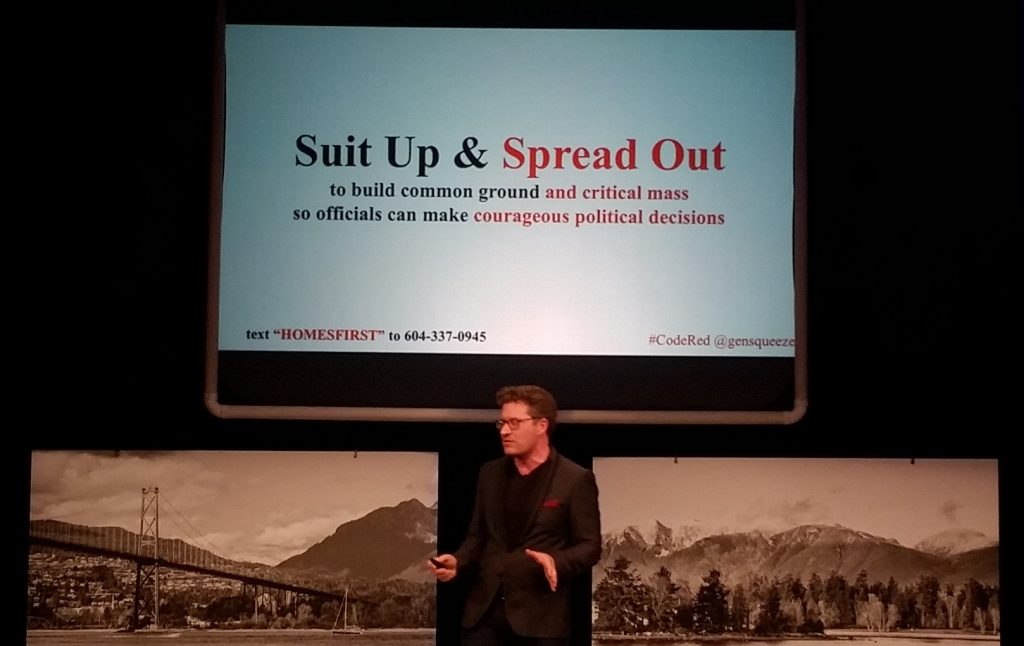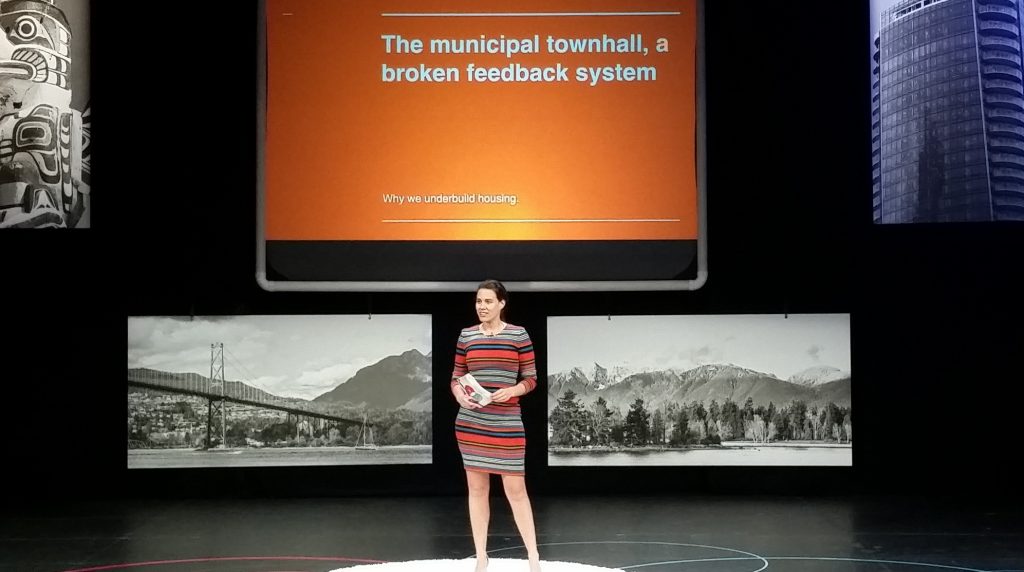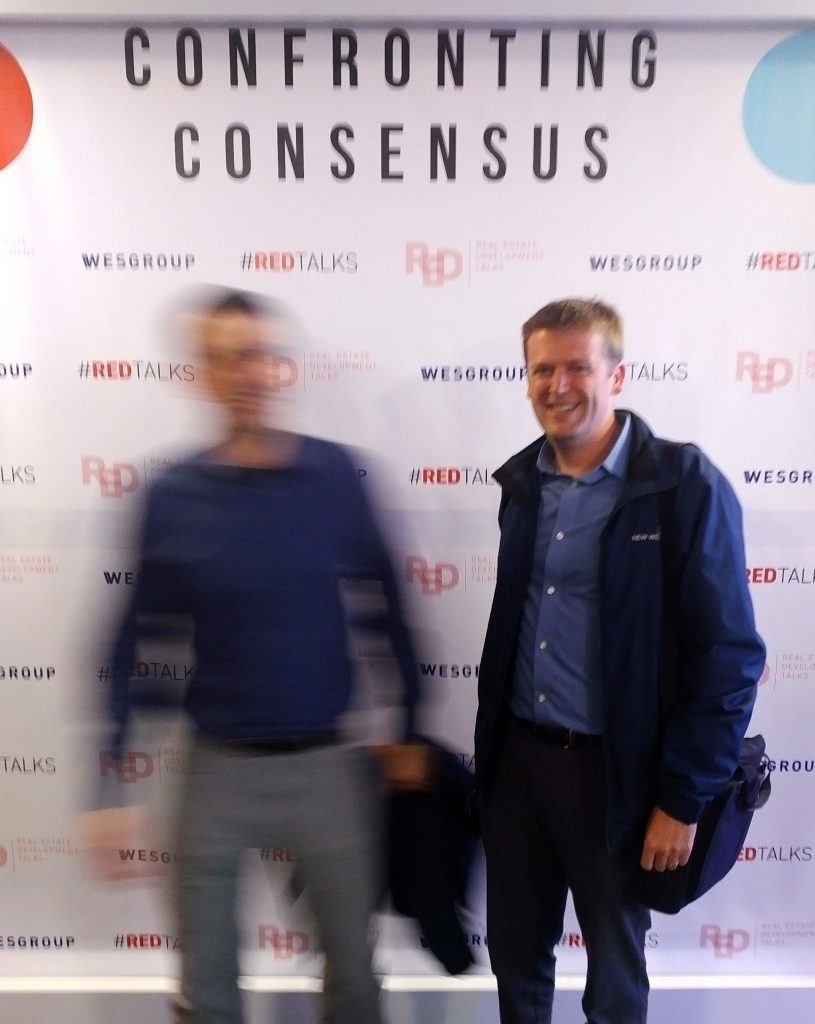I have written a few things about this election, and recognize that (perhaps reflecting our social media environment) much of it is about what I am voting against. This post I’m going to avoid all of that and speak only about what I am voting for have already voted for.
I voted for change. Real change that can start on May 10th.
I voted for a leader that works with a team and speaks with people. One of my first impressions of John Horgan at a rally last year was that he called attention to his team. He talked less about himself and more about the accomplishments of David Eby, of Melanie Mark, of Judy Darcy. A good manager (and really, that’s what a Party Leader is) is one who gives his team the tools they need to get their work done, and supports them in that work. In watching his interactions with his team, that is exactly the kind of guy John Horgan is. He also speaks to – and listens to – people, no deposit required. He does not turn away from a dissenting voice, whether giving a heckler at a public event a chance to speak his peace, or following up with a party supporter like me when he makes a campaign promise I don’t support. I want my province and its government to be well managed, and John Horgan seems to me to be the kind of manager I would work for.
I voted for a balanced and costed platform that doesn’t over promise, but delivers solutions to critical issues on a realistic timeline. Real change includes a long-overdue coordinated provincial approach to day care that will ultimately result in a universal $10/day plan. Real change means turning electricity planning and rate forecasting back to the BCUC, the independent agency of subject experts working specifically to keep politicians from milking BC Hydro for short-term benefit. Real change means investing in health care to bring residential care up to the government’s own established standards. Real change means a respectful and accountable approach to Truth and Reconciliation that goes beyond lip service. Real change is attainable, starting next week. Time to stop putting it off.
I voted for a stronger democracy. We need campaign finance reform, reducing the influence of corporations and unions on the way our province is run, and reducing the cost of elections by reducing the money available for all of those noisy attack ads. We also need electoral reform, so that a vote for the party you want is more meaningful even if your party cannot form a majority. These changes can be delivered in the next term, moving BC from the “wild west” of elections to a modern, functional democracy.
I voted for a party that will support our region by putting our region’s biggest issues at the front of their platform. The Mayor’s Council (a diverse group of NDP, Liberal, and Conservative politicians) have made a clear choice this election, endorsing the NDP approach to regional transportation, including supporting the 10-year vision for transportation investment. I cannot help but believe that our affordable housing file will be better managed under David Eby, who has been the most passionate and pragmatic political voice on this issue for the last 4 years. The opioid crisis needs to be treated as the public health emergency it is, not with sympathy and naloxone, but with the resources needed to save lives and get people out of the cycle of addiction.
I voted for a party that will represent the diversity of British Columbia. The NDP are running a group of candidates across the province that represent the diversity of the Province. We also need a party that will measure our economic success not by increases in wealth for the most fortunate, but by how that wealth invests in the future of the province. A minimum wage that provides dignity, removing punitive cuts to those with disabilities, investing the seismic upgrading of schools, returning to the business of supportive housing… the list goes on. We are a rich province, we will continue to be a rich province because of our wealth of resources (natural and human) and our fortunate location in the evolving world. It is time we started acting like a wealthy province and invest in our people.
I voted for a great MLA. Judy Darcy is someone I am proud to support. She works hard, she works collaboratively, and she treats all people with respect. She is loud when she has to be, and is quietly collaborative when that approach is needed. She is supremely optimistic about her city, about her province, and about the positive role of government. I have seen her work hard in New Westminster, and speak loudly in Victoria. She has brought positive initiatives to New Westminster, even while in opposition. I know she will work just as hard for us when she is in government, and New Westminster will have a voice in Victoria that will be heard.
Most importantly, I voted. Please get out there and vote for the result you want to see.
